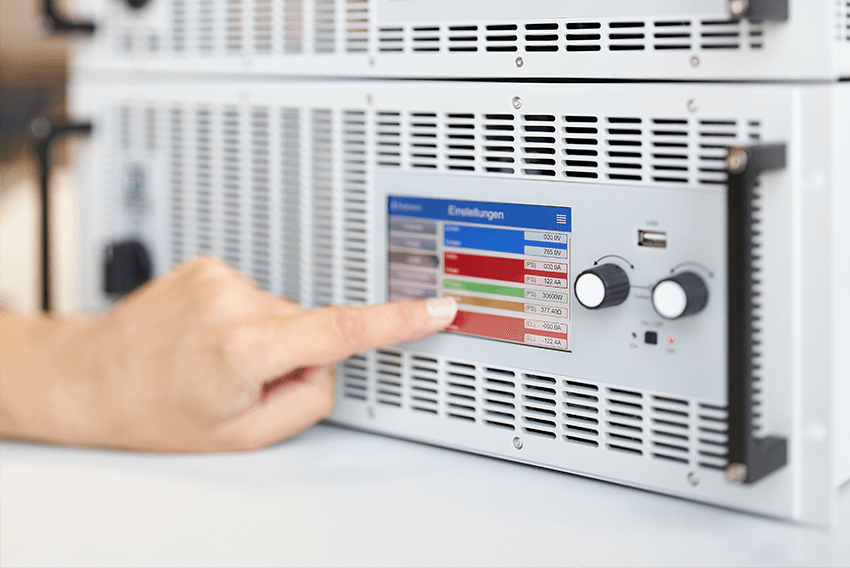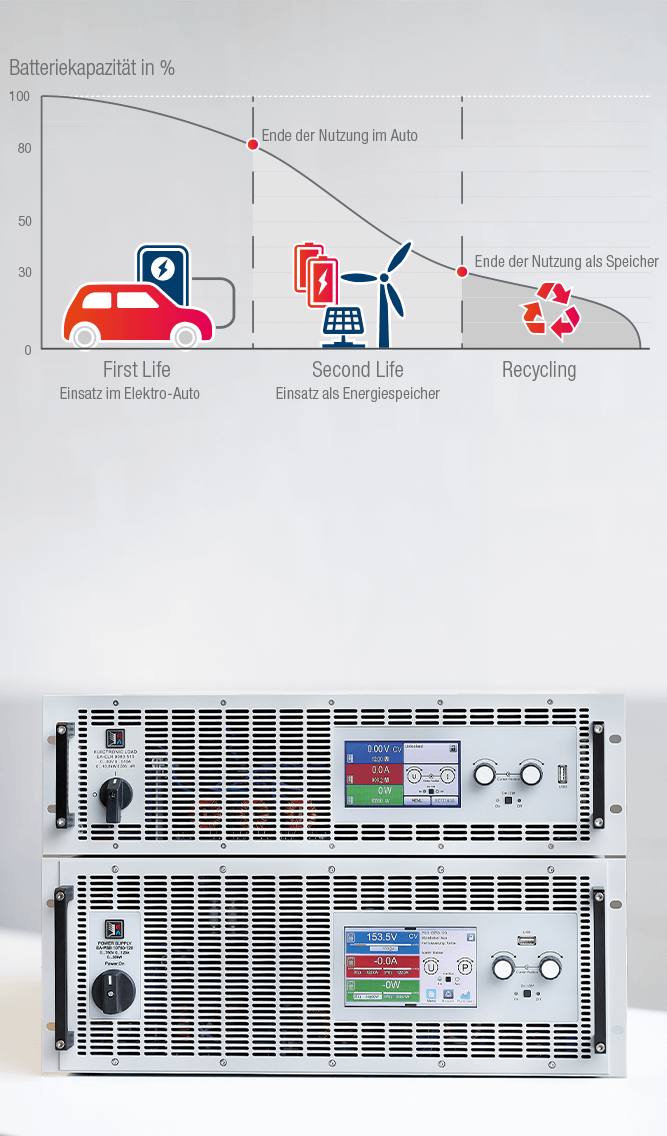#statusMessage#
Do you want to start the compare now?

Electric vehicles are the future - but what happens to the batteries when they can no longer be used in cars? Efficient recycling and clever reuse are crucial for sustainable mobility. Find out how innovative technologies make this possible and what opportunities arise from this.
Electric vehicles are the future – but what happens to the batteries once they can no longer be used in cars? Efficient recycling and smart reuse are key to sustainable mobility. Discover how innovative technologies make this possible and which opportunities arise from them. To ensure overall sustainability in electromobility, second-life concepts and efficient battery recycling play an essential role.
The programmable bidirectional power supplies and regenerative electronic loads from EA Elektro-Automatik provide the optimal foundation for the sustainable reuse of retired batteries. The recovered energy is fed back into the local power grid with an efficiency of over 96%, delivering a particularly cost-effective and safe test solution.
Second-life batteries from electric vehicles can, for example, be reused as energy storage for solar and wind power or for backup power supply.
After the second-life cycle, aged batteries are ultimately recycled, with the aim of recovering as many materials as possible for the production of new batteries.
(Graphic in German)


After their use in electric vehicles, lithium-ion batteries can be repurposed for other applications. These so-called second-life batteries are particularly suitable as energy storage systems for solar and wind power or for backup power supplies. To test the remaining capacity, the battery is fully charged using a programmable bidirectional power supply such as the PSB10000 series and then precisely discharged with the same instrument.
This determines the capacity and, from this, the state of health (SOH). The excess energy from the discharge can be fed back into the power grid with up to 96% efficiency.
At the end of their second-life cycle, old lithium-ion batteries are finally recycled. The goal is to recover as many raw materials as possible for the production of new batteries. Regenerative electronic loads from EA, such as the ELR10000 series, provide a highly efficient solution for the complete discharge of batteries.
This enables optimal utilization of the remaining stored energy while eliminating the potential hazards of contact voltage or fire. Complete discharge of battery storage systems ensures a safe recycling process.
A grid-regenerating electronic load converts the extracted energy from the connected battery into AC power with up to 96% efficiency and feeds it back into the local power grid. Reduced energy costs help amortize the investment in the electronic load.
(Graphic in German)
Via the user-friendly interface of the EA Power Control software, EA DC power supplies and electronic loads can be conveniently controlled from a Windows PC. With the optional Multi Control feature, the measurement parameters of up to 20 devices can be managed simultaneously. This provides significant support for efficient test workflows, particularly during mass testing and discharging.
EA Power Control also enables the simulation of photovoltaic arrays and fuel cells. Automated updates and remote maintenance support your operations and ensure that your laboratory equipment remains up to date.

You are not quite sure yet or have further questions about the products? Do not hesitate to contact us. Whether directly on the phone or via online demo conveniently in front of your screen - our experts are there for you.